Masking up has become much more widespread due to the pandemic than it ever was in the country before. Many hope that it will continue to be a normalized practice whenever anyone gets sick, to help keep those around them safe. It’s been common practice in Asian countries for ages now, and we can learn a thing or two from them.
If you’ve paid attention to any of the mask controversies, one of the anti-mask talking points is “maskne”, or mask acne. While it’s not as prevalent as some people would have you believe, it can certainly happen.
So, what is it, and how can you deal with it?
What is Mask Acne?
Masks are a face covering, and a face covering necessarily contacts the skin. This can cause irritation and skin damage.
Typically, this kind of damage primarily occurs in healthcare workers. Healthcare workers, especially those working in the ER or an infectious disease ward, are used to wearing masks for long periods. That doesn’t mean it’s pleasant to do, but they do it for hours on end. Most of us, of course, only need to wear a mask when we’re not otherwise isolated; a run to the shops, time at the office, and so on.
Masks can cause damage to the skin around the face in three different ways.
The first is physical pressure and rubbing. Some face masks require a full face seal, and everywhere the mask contacts the skin is a point of pressure. An ill-fitting mask rubs and puts pressure in uncomfortable places. This can lead to minor irritation similar to a rugburn, and after extended periods of mask-wearing – days and weeks on end – it can lead to pressure ulcers. This often occurs on the bridge of the nose, but might also happen around the edge of where a mask sits, and on the backs of the ears where straps put constant pressure on them.
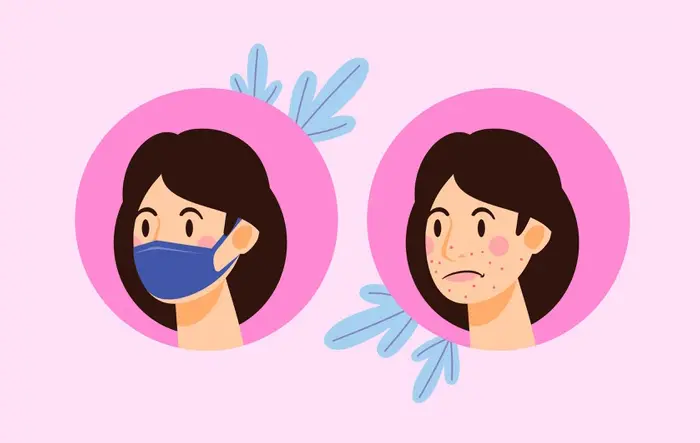
The second is irritation. Skin irritation can occur when something like cloth or paper is in contact with the skin for an extended period. That material absorbs your skin’s natural oils, which dries out the skin and leaves it red and vulnerable. Dry skin can flake, crack, and grow inflamed.
This is made worse in people who have skin conditions such as eczema, psoriasis, rosacea, or just sensitive skin. Extended contact with a mask can cause a flare-up of these skin issues, which is uncomfortable, painful, and unsightly.
This can also be caused by contact with a chemical irritant. Something that your skin is sensitive to, and which causes a minor rash, can be similar to an allergen but without the full-on hives of a true allergy. This is known as allergic contact dermatitis.
The third is occlusion. Occlusion is simply a fancy word that means “blockage”, and in this case, it refers to your pores. A mask traps moisture, oils, and bacteria that would otherwise dissipate in the air when you breathe. As more and more of this stuff builds up on your skin, it works its way into pores. This can lead to acne flare-ups in people who suffer from oily skin or who are prone to acne.
This can also lead to a condition called folliculitis, which is the inflammation of a hair follicle. Similar to pores, hair follicles can be clogged with moisture, oil, and bacteria, and a minor infection can cause it to flare up. These conditions are similar in appearance, pain, and treatment.
As you can see, many of the issues with masks come from a few root causes. Masks that are too tight, are poor fitting, and that trap too much moisture can all lead to problems. How do you solve those problems?
Wear a Properly Fitted Mask
Probably the number one thing you can do to avoid a lot of skin irritation and pressure is to wear a mask that is properly fitted for your face. It’s easy to think that all masks are the same, especially when they rarely if ever come in different sizes beyond “adult” and “child”, but there are a lot of different variations. One of the reasons healthcare workers suffer less than the average person would with similar mask usage is that they’re generally fitted for appropriately-sized masks regularly.
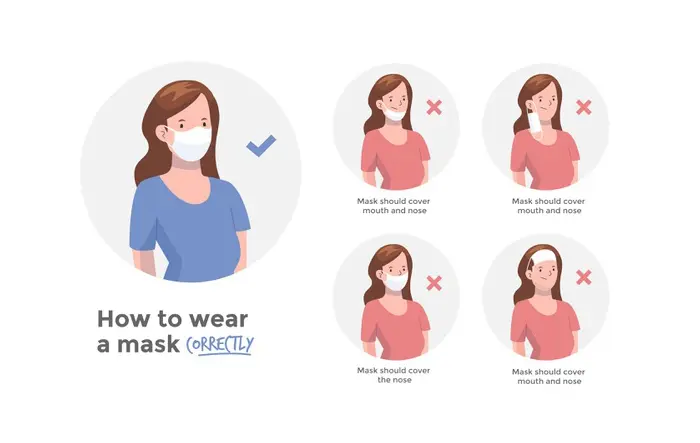
If you can’t properly fit a mask, you can try some “mask hacks” to try to alleviate some of the irritation. We also recommend wearing a mask made out of some kind of stretchy cloth, so it is more form-fitting and less likely to leave gaps.
Wear a Soft Mask or Cloth Mask
The best masks you can wear are the N95s that medical workers wear, but they are in limited supply. It’s generally recommended that you let the healthcare workers use those masks. The Center for Disease Control recommends a cloth mask as the next best thing. They aren’t filtering (unless you have a mask that has a filter insert, like ours), but they do inhibit droplet spread and makes it less likely that you’re going to put yourself or others at risk of catching the virus.
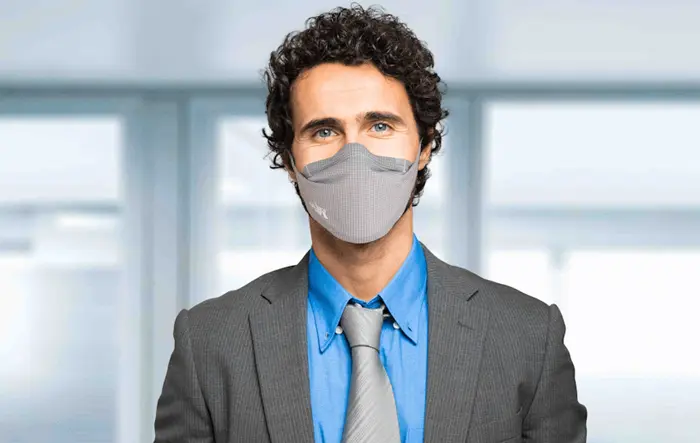
Once the pandemic is over and we’re not as concerned about COVID, you might still want to wear a mask when you’re sick, or when you’re immunocompromised and want to avoid getting sick. A cloth mask is likely still fine to wear in these cases, but surgical masks and medical-grade N95s will be more available once demand decreases.
If you choose to wear a cloth mask, try to aim for a mask with as tight a seal around the face as possible, and one that has replaceable filter inserts. A machine-washable mask made out of a slightly stretchy fabric and a replaceable insert is a good deal.
Wash Your Face
One of the primary causes of mask acne and skin irritation is bacteria build-up on your skin. That bacteria is trapped by the mask when you breathe out. It’s generally a good idea to wash your face regularly when you’re wearing a mask.
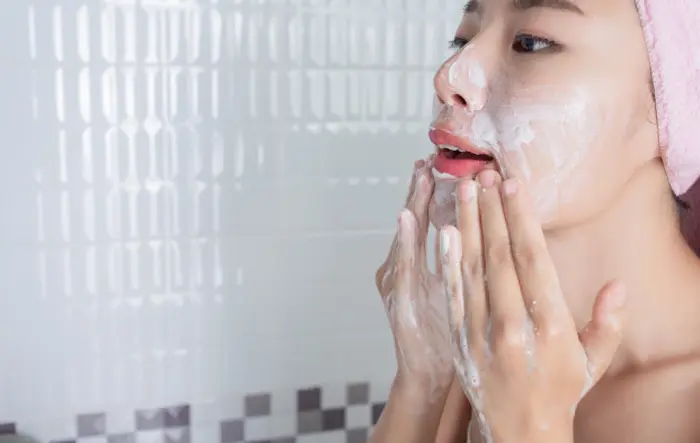
In particular, wash and cleanse your face with a cleanser or a gentle face-friendly soap before putting on your mask for the first time that day. If you’re wearing it for more than an hour or so, take the time throughout the day to remove your mask (properly, please) wash your face, and put the mask back on.
You want to use a gentle cleanser on your face. Avoid products that have harsh cleansers or heavy chemicals like petrolatum in them, which will further clog your pores and can cause issues with increased pressure and rubbing.
Brush Your Teeth
Bacteria on your skin, trapped under the mask, is the leading cause of mask acne. You might wonder, where does it originate? Some of it is naturally on your skin, and some of it is in the air, but most of it comes from inside your mouth. That’s right; dental bacteria, the same stuff that causes cavities, bad breath, and other oral issues, is primarily what’s getting trapped under your mask and causing acne.
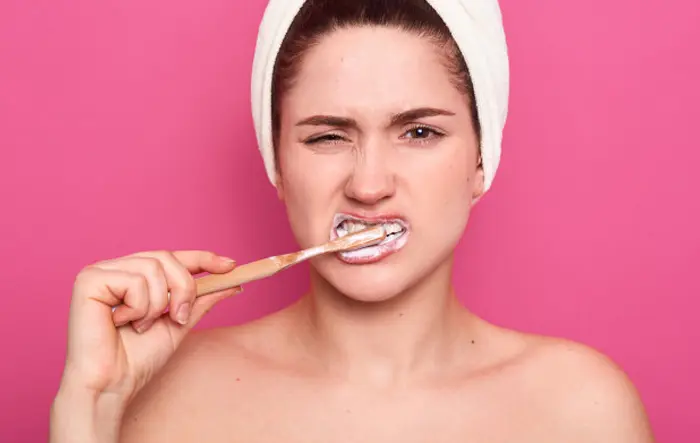
In addition to washing your face regularly, it’s a good idea to make sure you’re thorough with brushing your teeth. Brush before you put the mask on, and brush after you eat during the day, to make sure you’re keeping your mouth as bacteria-free as possible. You’ll never be able to get rid of 100% of the bacteria – humans are teeming with it – but you can get rid of a lot of it, and that helps.
It can also be worthwhile to bring a small bottle of mouthwash along with you, especially if you can’t take the time to brush your teeth during the day. Mouthwash is generally alcohol-based and can help cleanse the inside of your mouth throughout the day. As a bonus, the fresh scent of mouthwash helps minimize bad odors that get caught in a mask you’ve been using all day.
Use a Moisturizer
Some people argue that, since trapped moisture is one of the problems causing mask acne, you should avoid using a moisturizer. Here’s what dermatologist Frauke Neuser says:
“Oh my god. No. The opposite is true. Well-hydrated skin is the only kind of skin that can be considered healthy skin. If you have dry skin, your skin barrier is compromised. Oily and hydrated are different things.”
Your morning routine should involve a two-phase skincare process. First, use soap and water or a gentle cleanser to wipe away anything that currently clogs your pores or has built upon your skin. You can just clean the area of your face that is covered by your mask, but at this point, you might as well clean your whole face. Men, this means you too; skincare isn’t just for women.
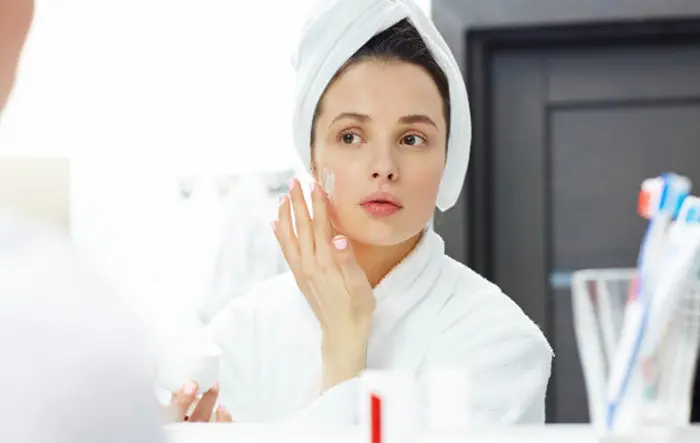
The second phase is to use a light moisturizer on your skin to hydrate and protect it. There are a ton of different moisturizer products on the market, but it doesn’t necessarily matter what you pick. Some are formulated slightly differently for different kinds of skin, but since you’re cleansing first, your baseline skin should be accepting of any moisturizer. Just avoid anything with petrolatum in it and you should be fine.
Minimize Makeup Whenever Possible
Makeup can sometimes have moisturizing and protective layers in it, but most of the time the foundation and other makeup you might use over the top of your moisturizer isn’t going to do you any favors. It alone isn’t likely to cause a breakout, but it can compound with whatever gets caught on your skin beneath your mask. Plus, it can rub off on the inside of the mask, which both ruins the appearance of the makeup and can clog up the mask, making it a little less effective.
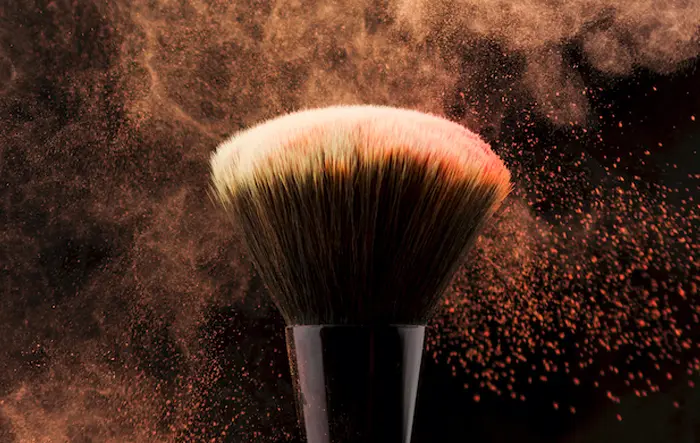
Plus, the reason most people wear makeup is for their appearance, and when we’re socially distanced and wearing masks, you don’t need to worry about your appearance beneath the mask. You can use makeup to style your eyes just fine, and hairstyles are perfectly acceptable, so there’s still plenty you can do to enhance your appearance when you’re out and about.
Might we also recommend wearing a mask that takes fashion into consideration? Picking a mask with a compelling and interesting pattern, and accentuating that pattern with eye makeup, can be plenty for a quarantine appearance.
Clean (Or Replace) Your Mask Regularly
Depending on the style of mask you’re wearing, you’ll want to handle it properly after every use. Consider it a contaminated article of clothing and treat it accordingly.
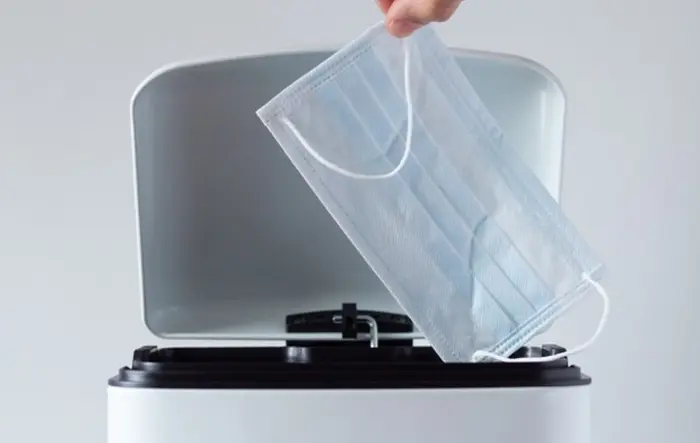
If your mask is a one-use disposable mask, get rid of it. Surgical masks especially cannot be cleaned and should be discarded after they have been used. Other masks may be used once or twice before discarding them or used until their filters clog up and it becomes too hard to breathe through them.
Cloth masks that have filters should have the filters removed and replaced, and the cloth mask itself washed in between uses. We wrote a post a while back about how to properly clean your mask, so check it out to figure out how to clean whatever style of mask you have.
Avoid Laundry Detergent with Fragrance
When you wash a cloth mask, you want to avoid using a laundry detergent that has a fragrance in it. The reason is that the fragrance chemical is rarely fully rinsed out with a washing and drying cycle.
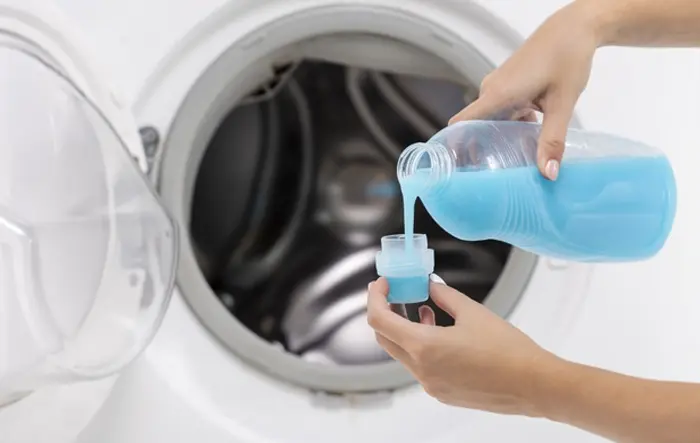
That same fragrance chemical can cause contact dermatitis or chemical irritation, which causes many of the skin problems you see above.
Consider a Salicylic Acid Treatment
If you do end up having a flare-up of acne or folliculitis, you’ll want to use a light product designed for cleansing and fighting acne. Products with benzoyl peroxide or salicylic acid are designed to dissolve, loosen, and unclog pores, and thus fight acne by letting the skin heal faster.
Remember to be gentle when cleansing acne. Avoid popping or scratching at pimples, as that can worsen the infection and drive it deeper into the skin. Additionally, try to avoid going out – and thus wearing the mask – for a few days after a flare-up to give it time to settle down.
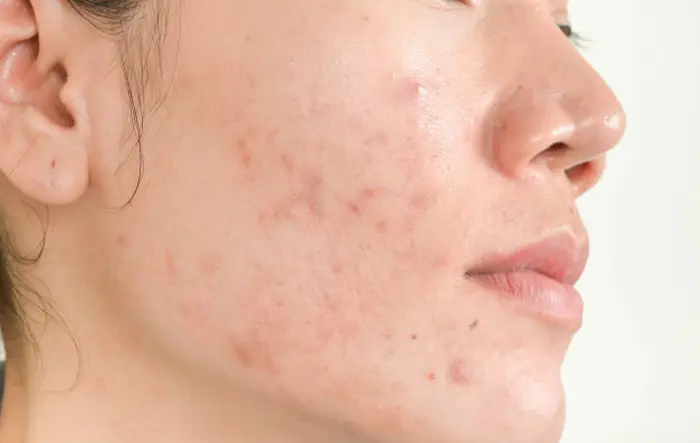
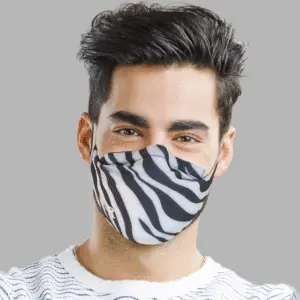

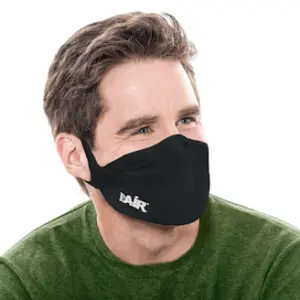
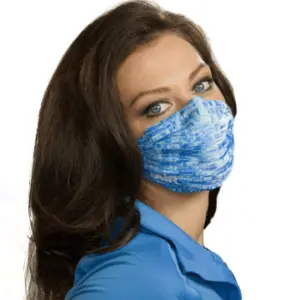
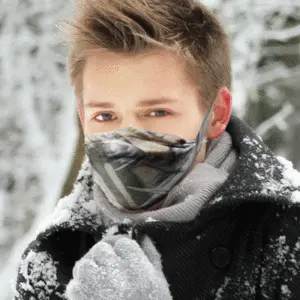
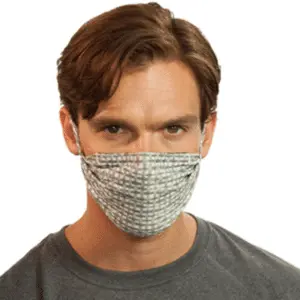
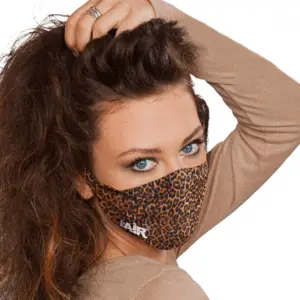
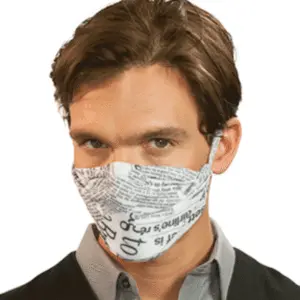

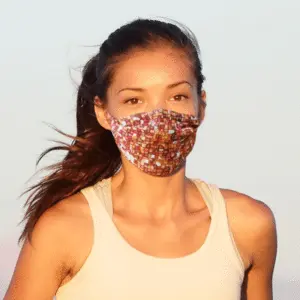

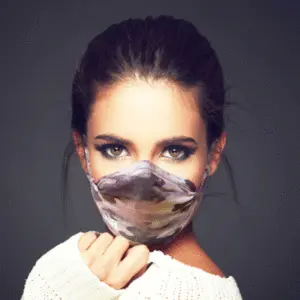
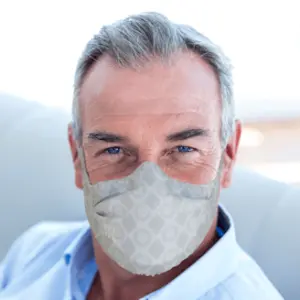



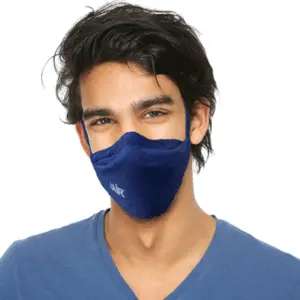

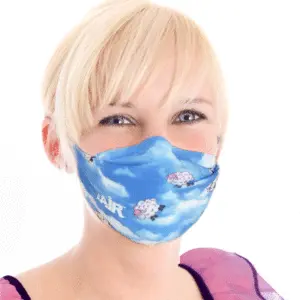
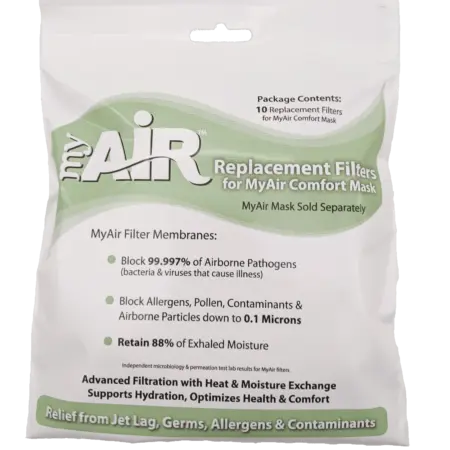
0 Comments